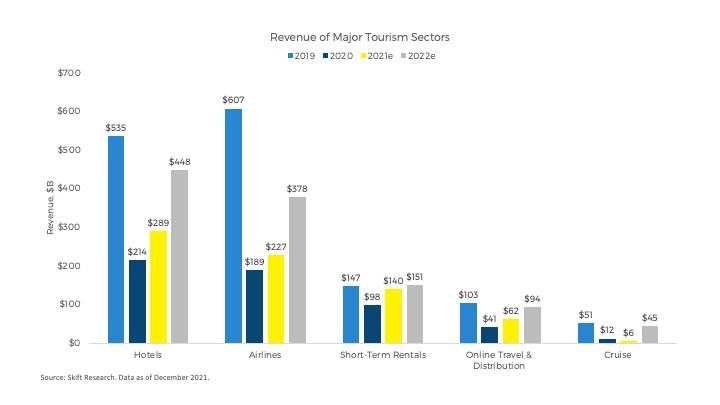
1 minute read
Grave Impact of the Pandemic on Tourism
The Covid outbreak caused a global travel collapse since mid-March 2020, with cross-border travel taking the gravest hit. The arrivals of international tourists showed a sharp decline of 73% in 2020. Between January and September 2021, worldwide international tourist arrivals were 20% lower compared to 2020 and 76% below the pre-pandemic levels.
The last quarter of 2021 was expected to see a travel boom owing to the holiday season, but the emergence of the Omicron variant in early December is resulting in countries re-imposing more extensive travel restrictions and making the future uncertain yet again.
The only thing certain is that the pace of recovery will remain slow and uneven across world regions due to varying degrees of mobility restrictions, vaccination rates, and traveler confidence.
EXHIBIT 1: INTERNATIONAL TOURIST ARRIVALS DECREASED SHARPLY IN 2020 AND 2021 AS COMPARED TO 2019
Given this dire decrease in international travel, many destinations have focused on domestic and nearby markets to make up for the loss. However, for a considerable number of countries, revenue from international tourism contributes significantly to their GDP and revival of international tourism is crucial for their tourism industry.
As per UNWTO, the impact of Covid on tourism could result in more than $4 trillion loss to the global economy. In our annual outlook for the travel industry, Skift Research created 2022 global forecasts for all major travel sectors. Revenue of these sectors are expected to reach 2019 levels by 2024 at the earliest.
EXHIBIT 2: REVENUE OF MAJOR TRAVEL SECTORS IS EXPECTED TO REACH 2019 LEVELS BY 2024 AT THE EARLIEST.







